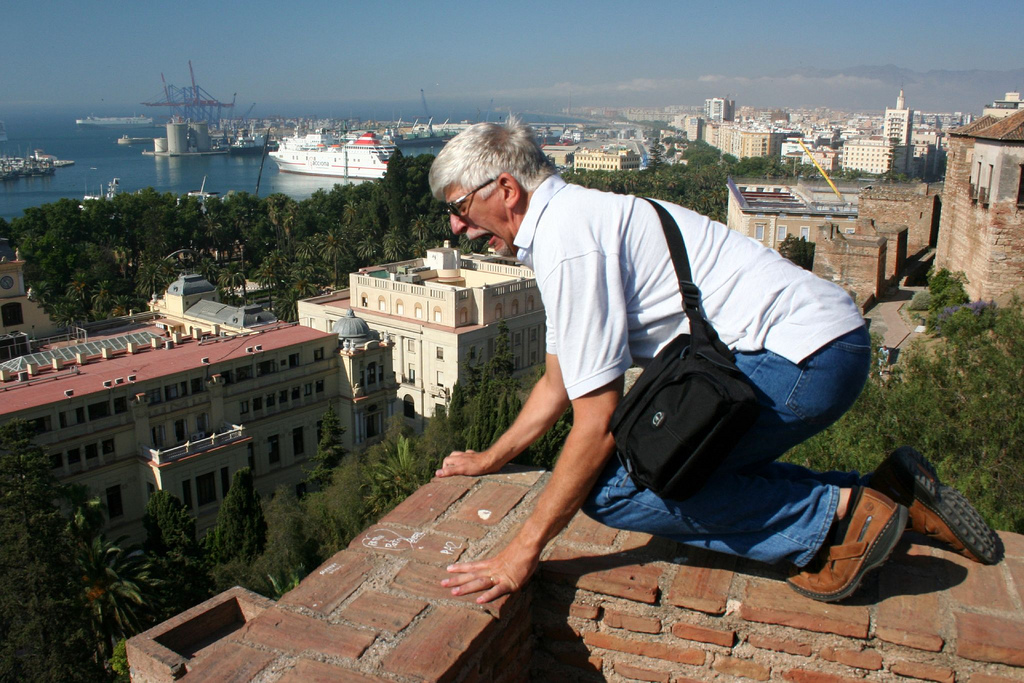While many people tend to enjoy adventurous sports of bungee and paragliding from huge heights these days, many others may even have a hard time looking down from the fifth floor of a building.
Acrophobia is a word derived from Greek word “acron” which means height. Any person who has persistent and intense fear and nervousness with heights may have acrophobia. It is signified by an overwhelming amount of fear that onsets upon encountering a great height. In fact, the fear may occur even when the person is merely climbing simple stairs.

Acrophobia may occur simultaneously with other kinds of fear as well.
Aerophobia
Aerophobia is an intense fear of flying, or being in air. This may also come along with acrophobia.
Illyngophobia
Illyngophobia is a fear of having spinning and dizziness when looking down from a great height. This condition of being afraid of developing dizziness is known as vertigo. Acrophobia is confused with vertigo many times. A person may not directly be fearful of heights, but fearful of getting dizzy due to the height. This can be closely occurring with acrophobia.
Climacophobia
This is extreme fear of climbing or going down a height, especially stairs or slopes. This can also occur alongside acrophobia.
Bathmophobia
This is the extreme fear that can occur by simply seeing or observing stairs or slopes. The person may not necessarily have to climb the height, but he/she would get scared just by seeing it.
How Common is Acrophobia?
Acrophobia is one of the very common phobias in the world. In fact, the fear of heights is ranked second as the most common phobia in the UK after Arachnophobia ( fear of spiders). Studies show that 14 percent of the population of the UK has acrophobia. Among those having acrophobia, women are seen in majority.
This is considered a natural fear, as all of us have a distinct alertness when it comes to heights. The fear may take a form of serious phobia only when it is magnified and goes above the bar.
Causes of Acrophobia
The major cause factors that have seen to develop acrophobia in people are:
A traumatic experience
Many times the phobia can be developed due to a traumatic incident related with falling from a great height or such accidents. The fear of heights is a naturally formed fear in human beings. However, if any such event occurs, the fear is magnified and leads to acrophobia. The fear can also get morbid simply by witnessing someone else go through a hurtful accident from height.
Evolutionary factor
All of us are born with the fear of heights. It is like a defense mechanism formed by our body as a response to huge heights like during cliff climbing or looking down from a hill. Studies show that event infants and toddlers become fearful when brought to a height. This is a learned behavior in all human beings since early civilizations. People tend to get acrophobia when the learned behavior goes over the extreme.
What are symptoms of Acrophobia?
Common symptoms include the onset of panic attacks and vertigo. Vertigo is the medical condition in which the person fears of developing dizziness. The major symptoms that occur with both children and adults having acrophobia are:
-
Intensely fearful of climbing, going down or being at a height
-
Anxiety upon anticipation of great heights
-
Immediate reactions such as lowering the body, kneeling, going down instantly or desperately finding something to clutch when brought to a height
-
Complete avoidance of places at height ( the person may even avoid a workplace or visiting a friend’s place located at a height)
-
Realizing that the fear is irrelevant (except in children)
-
May or may not develop vertigo. It is a medical condition signified by the fear of dizziness
-
Panic attacks accompanied by physical signs such as sweating, trembling, fainting or dizziness, nausea and vomiting, trouble in breathing, chest pain, racing heart beat, numbness around limbs, getting frozen, detachment from reality and feeling that one is getting mad
When to Visit a doctor?
If you have the above symptoms for more than six months, and have affected your daily living then you should consult with a mental health professional. If you have the extreme fear of heights and your daily chores circles around places at great heights, you need to start with the treatment process.
How Acrophobia Is treated?
Various therapies and medications can be used to treat acrophobia in people.
System Desensitization and Exposure therapy
This has been considered as a very effective therapy in acrophobia. The therapist exposes the person to a fearful subject, and tries to reduce the level of fear gradually. In the case of acrophobia, the person may be given task related with heights such as climbing stairs . The therapist would learn why and how the person gets fearful. Through regular sessions, the therapist would increase the height and try reducing the level of fear.
One of the effective techniques used in the whole process is relaxation methods. The therapist would teach different relaxing ways such as breathing control, muscle relaxation and mental visualization to the person to deal with the fear. The main aim is to instill relaxing habit in person when confronted with the fear and panic attack.
Cognitive Behavioral therapy(CBT)
CBT is a therapy focused on recognizing the negative thoughts and images associated with the fear of heights. The therapist will have enclosed counseling sessions with the person, and tries replacing the negative thoughts with positive ones. The major purpose is to modify the fearful behavior to a positive positive behavior by teaching different coping skills.
Medications
Medications are another important part of the treatment process. Commonly used medicines are anti-anxiety and anti-depressant medicines to control the symptoms related with acrophobia.